Create game on the night hackathon
The night hackathon GeekNight is a traditional entertainment in the provincial town of I. It was not spent for four years, and finally it was time to revive the legendary event and simultaneously conduct a couple of experiments ...

Mitapas, conferences, seminars and other HR activities are raging from October to May and delight us with interesting reports. Only in the summer it all freezes a little. Some cities are lucky a little more and the show goes on, but in the summer of our province, IT life does not just freeze, but almost stops. For four years I didn’t spend the GeekNight hackathon, but this year, with the help of my friends, I decided to move the IT life in the city.
The format of the traditional night hackathon GeekNight and its success has always been in the head is inextricably linked with the venue - with the Irkutsk bar. I always managed to come to an agreement with one of the establishments, close it to outsiders, one might say buy it off for the night. When choosing a place, we always considered transport accessibility. On the one hand, convenient infrastructure, on the other - alcohol and food. The bar makes money. We are holding an event. Participants are full, a little relaxed and satisfied. A sort of classic win-win. By the way, you can see how it was before: tyts , tyts , tyts .
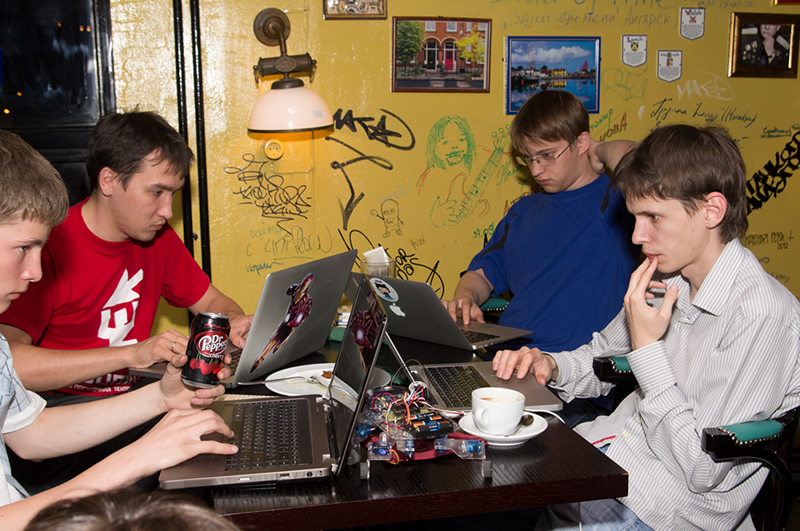
Four years after the last event, reviving the format turned out to be more difficult than it was thought. Mad idea was supported by colleagues from AnyChart ,Codefather , FirstVDS , ISPsystem , ITSumma . Only thanks to their help this quest was completed to the end.
Find a suitable bar failed all spring. The deadlines shifted and already wanted to quit this venture. But accidentally turned up a great room, although this required to abandon the usual format and set up an experiment. The hall was on the territory of the Art Factory Dorenberg. First of all, it was not a bar and had to negotiate with nearby institutions. They were expected to work all night and provide enough food to feed the hungry programmers. Looking ahead, we note that they were completely unprepared to feed the hackathon participants. Fedor Hall
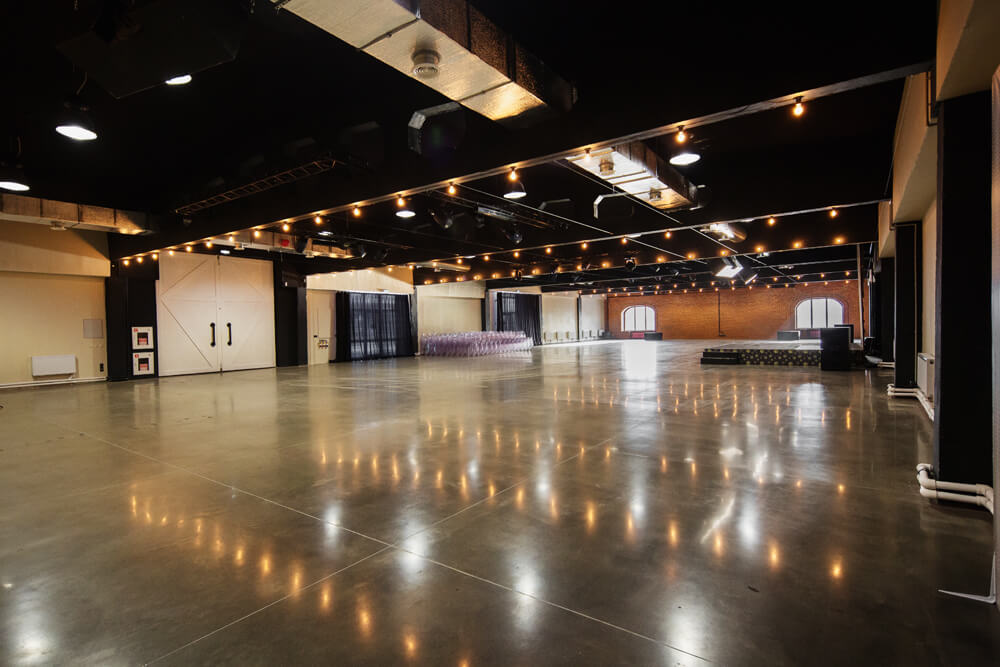
large room(about 1200 sq.m.) it was divided into two parts. One zone became working, it was there that the teams worked and boiled brains. The second was taken under the relax, providing a working coffee machine, comfortable bags in which you could hang around and play on the table.
Coffee is the main fuel of programmers, especially at night. Colleagues managed to arrange everything so that a car drove right into Fedor Hall, in the depths of which a charming girl barista was preparing excellent coffee all night long. This divine drink until the morning fed on all the participants with cheerfulness.
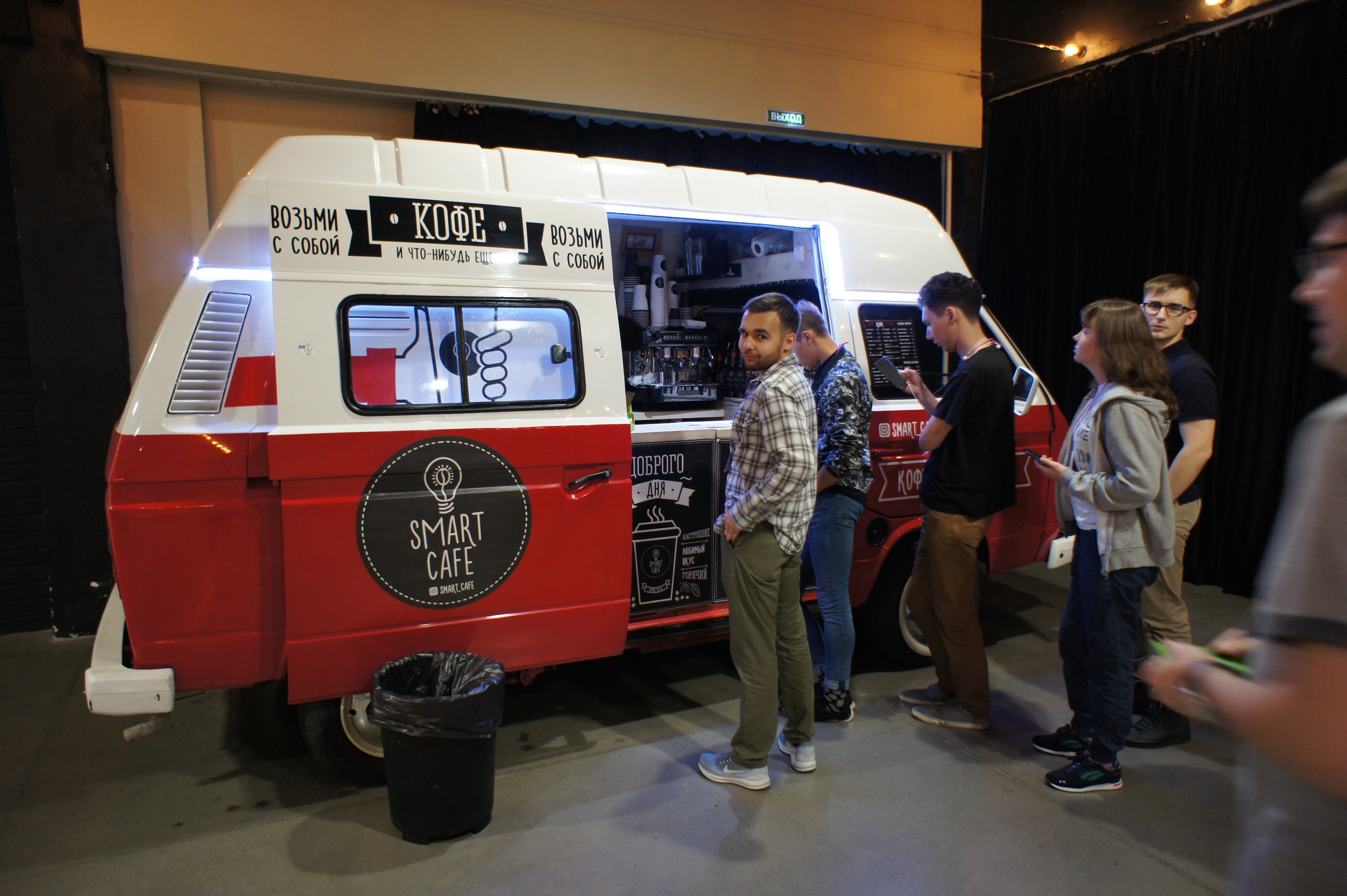
This coffee machine was the second, in my opinion, successful experiment. The inexhaustible queue of programmers even inspired one of the teams (CROC employees) to make an application for optimizing the coffee queue.
If someone tells you that gathering programmers in the summer for a night hackathon on a day off (on the night of July 21-22) is a trifling matter, you can safely tell him that he was talking. But despite the heat and the holiday season, twenty-seven teams were registered for the event. There was a slight panic, where to plant them all. But common sense prompted - not all will come. The event itself came eighteen teams. Teams of three to six people occupied each separate table and worked all night. Photos from the haekathon Geeknight 2018 can be viewed separately.
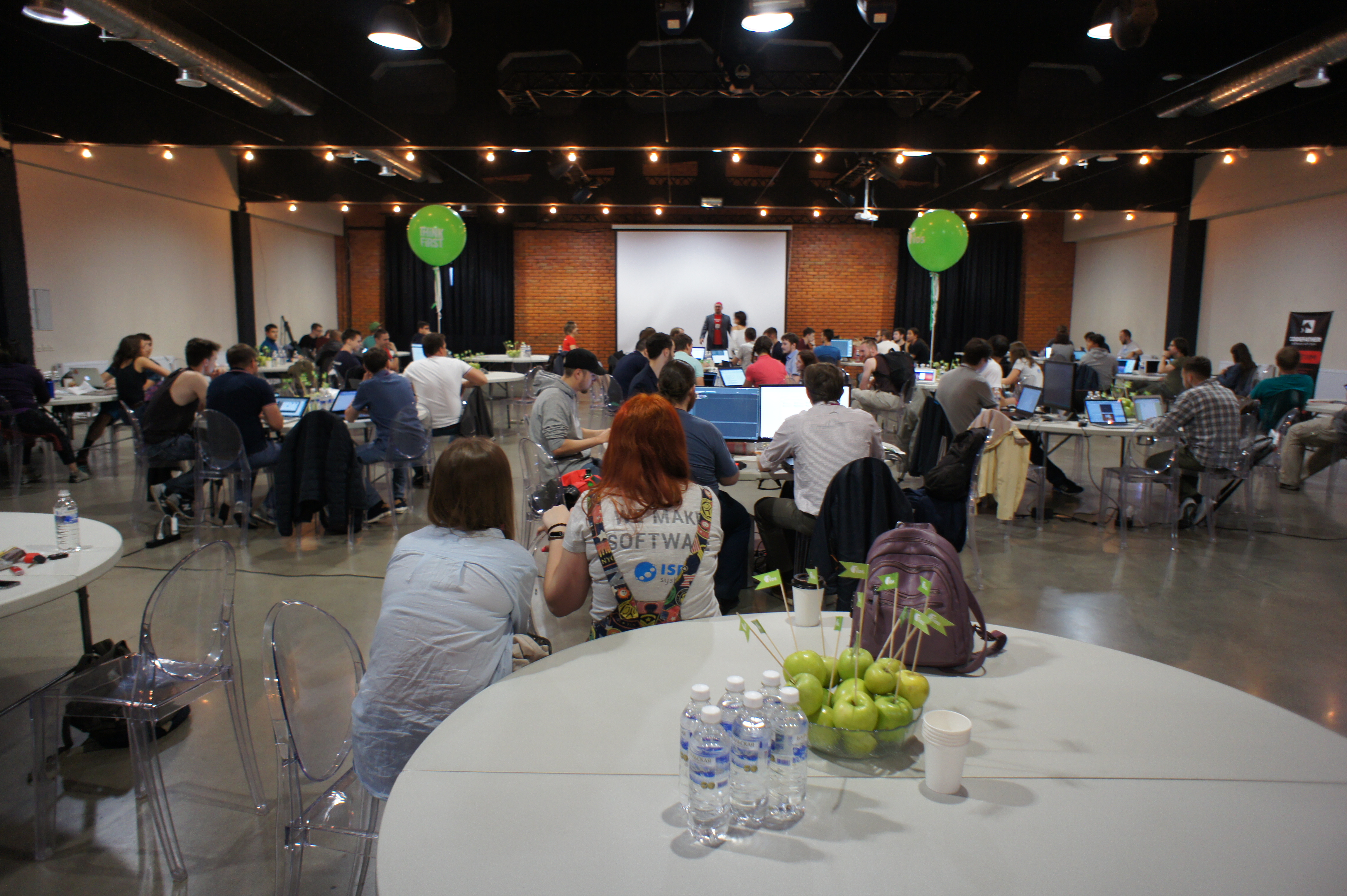
In the morning, each team that presented their project received one ballot paper for the final vote, which they handed over to the organizers at the end of the event to take stock.
In third place was the team from the company Snowforged Entertainment with its project Dead Flame - a small classic platformer with three-dimensional graphics about an anthropomorphic kerosene lamp, in which you need to solve puzzles and avoid encounters with enemies. The team at the Geeknight night hackathon consisted of two programmers and three artists, so that during the night not only many working game mechanics (interactive levers, flammable boxes, moving platforms, boiling from a high temperature boilers, patrolling opponents) appeared, but even animation!
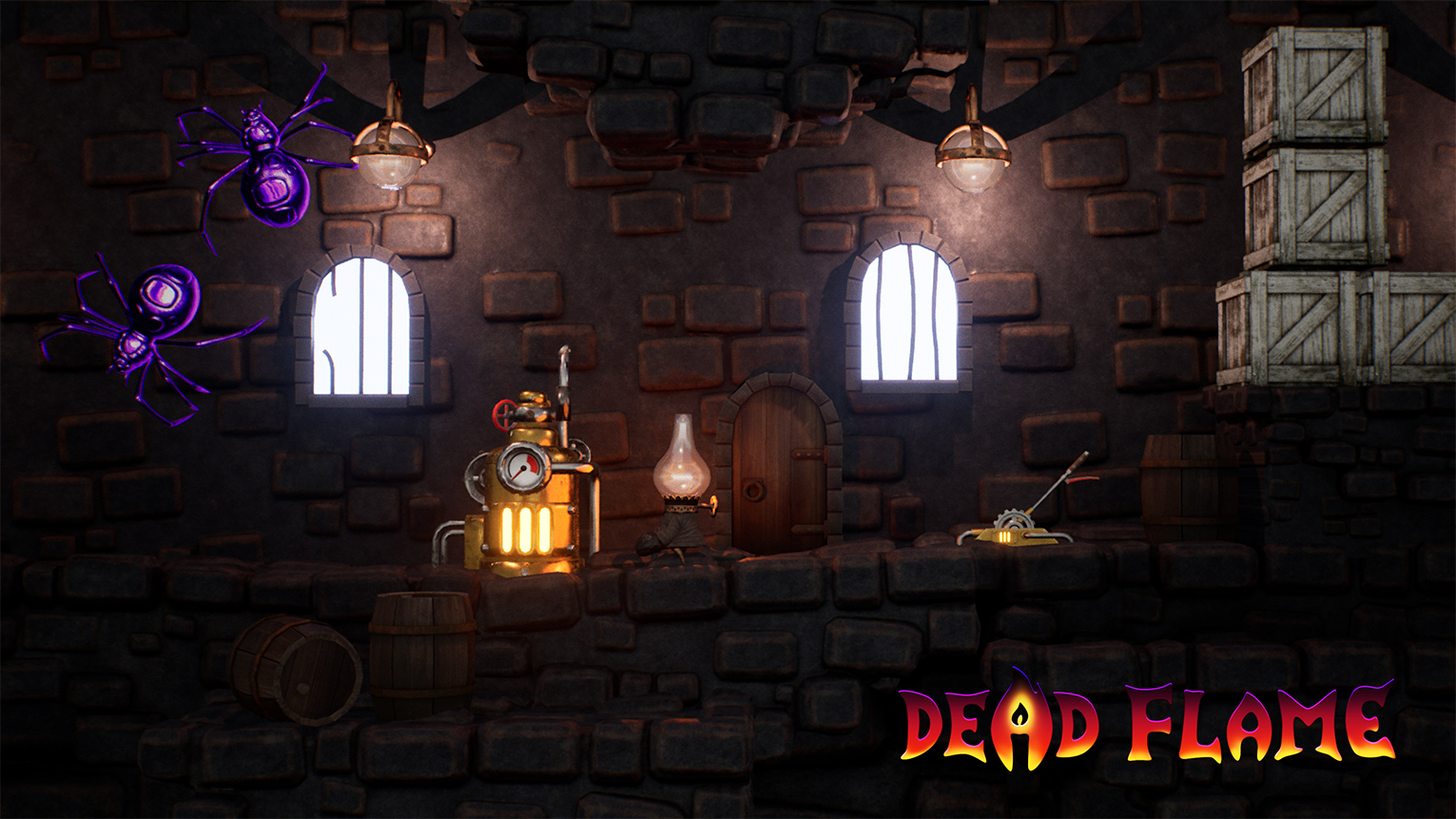
The second place was awarded to a team of friends who had not seen each other for a long time and specially gathered at the hackathon to cut down a small project. Mushroom Trip is a First Person Survival dedicated to the confrontation of man and mushrooms. The fundamental factor of this game is the steady decline of the player’s mind, which can again be increased by eating certain types of mushrooms, either raw or by preparing dishes from them. Mind impairment leads to various negative consequences: the fog thickens, colors begin to distort, and the ghosts of mushrooms eaten by the player are increasingly seeking revenge. The goal of the game is to try to survive as long as possible.
The game was developed on Unity, and Photoshop and 3DS Max were used to create 2D and 3D graphics, respectively. Due to the fact that the time available to us was limited to one night, triplanar shaders were actively used for texturing models, and the artificial intelligence of opponents was simplified to the limit.
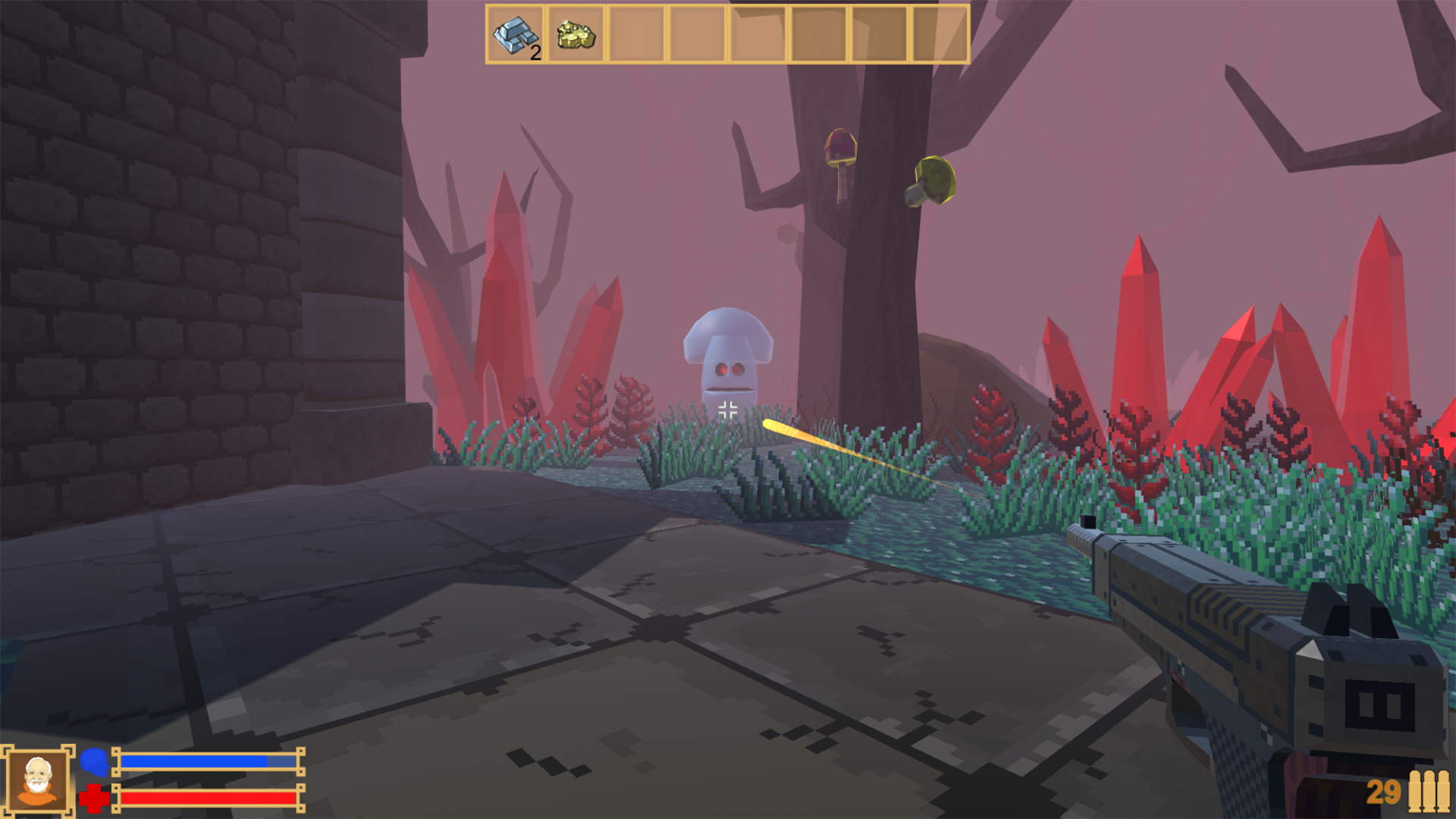
And the first place was taken by the team from ADICT with its development Emodzilla, a neural network hardware and software system for assessing the emotional response of the audience.
Separately, I want to highlight the VMmanager team from the ISPsystem company . Colleagues came up with a project to gamify the workflow. The main idea of the project is to make a “game against the system” in which the whole team works for the overall result. In this interpretation, all team members are a fun pirate gang that robs caravans, searches for treasure and wins naval battles. Since the team works on scrum, the sprint is the equivalent of a battle, sunk ships are completed user stories, and for in-game currency - gold obtained as a result of a successful campaign, you can receive quite tangible rewards.
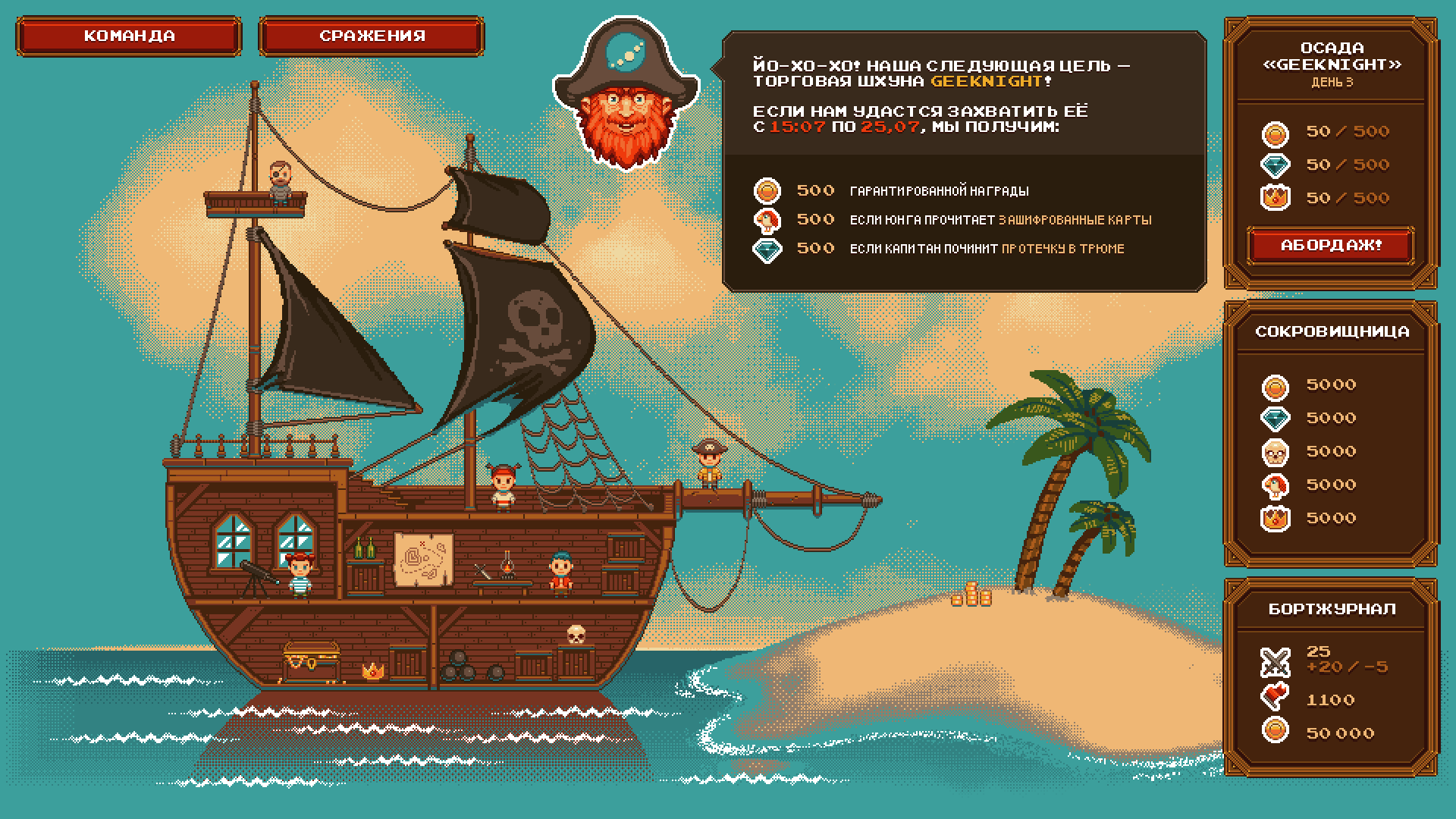
Also in the game you can take cool quests, like “Jung reads an encrypted card”, which, translated into everyday language, sounds like: “June makes a code-review”. Agree, the first option is much more fun, the more you can get a “parrot” for it! At the expense of the game, colleagues want to diversify the routine work and create a competitive element both with “from the past” and with other scram teams.
Another experiment can be considered IT radio broadcast on the nightly hackathon. Despite all the preliminary preparations, the broadcast itself was not possible.

Although it turned out a number of interesting interviews, some of which are collected in a small almanac .
P.S. I would like to express special thanks to the companies AnyChart , Codefather , FirstVDS , ISPsystem , ITSumma , without this support the hackathon could not have taken place.
P.P.S. Part of the prizes to the winning team, namely, the tambourine from the company FirstVDS , had to be handed in the afternoon, but that is another story ...
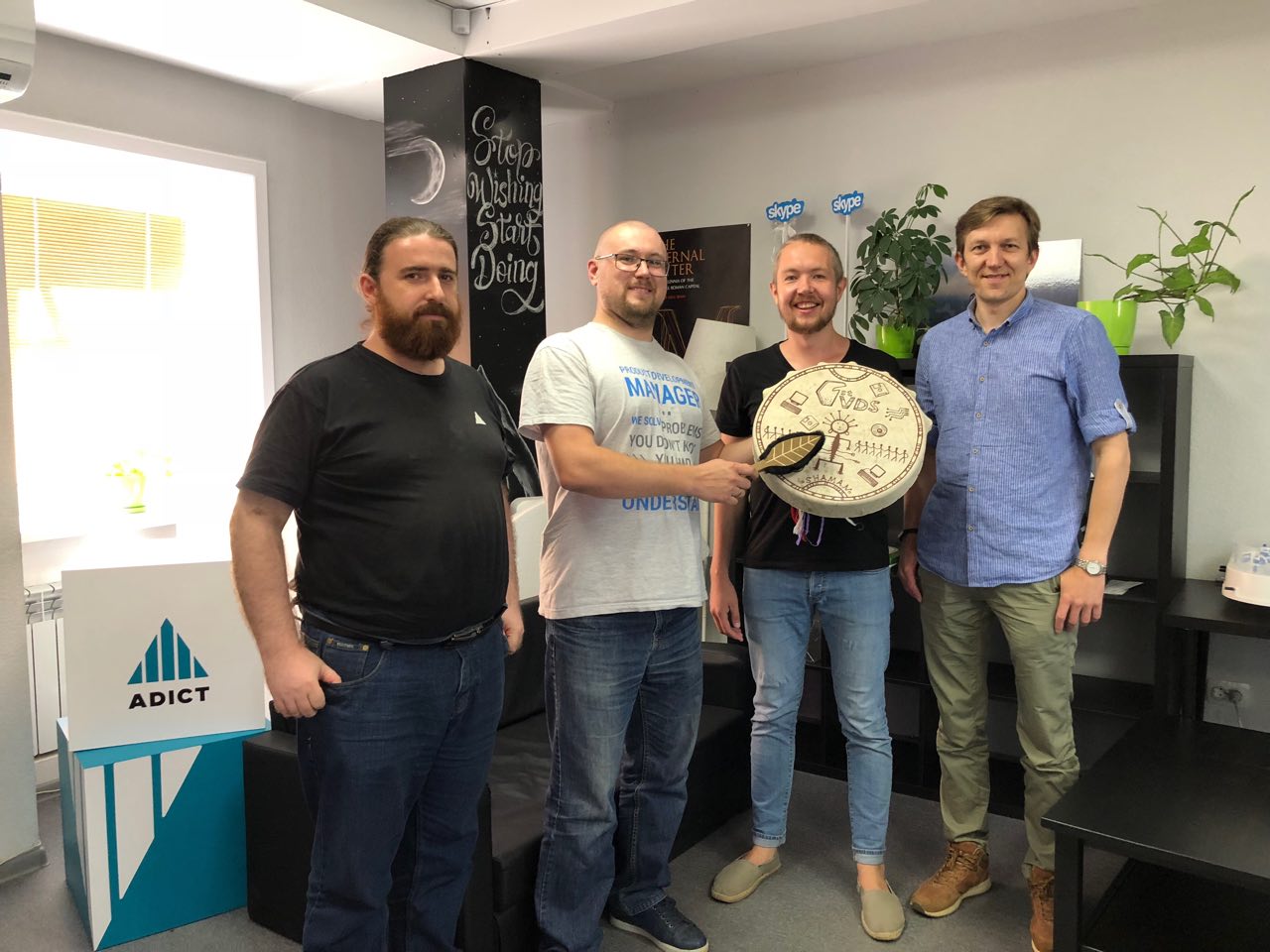

How it was
Mitapas, conferences, seminars and other HR activities are raging from October to May and delight us with interesting reports. Only in the summer it all freezes a little. Some cities are lucky a little more and the show goes on, but in the summer of our province, IT life does not just freeze, but almost stops. For four years I didn’t spend the GeekNight hackathon, but this year, with the help of my friends, I decided to move the IT life in the city.
The format of the traditional night hackathon GeekNight and its success has always been in the head is inextricably linked with the venue - with the Irkutsk bar. I always managed to come to an agreement with one of the establishments, close it to outsiders, one might say buy it off for the night. When choosing a place, we always considered transport accessibility. On the one hand, convenient infrastructure, on the other - alcohol and food. The bar makes money. We are holding an event. Participants are full, a little relaxed and satisfied. A sort of classic win-win. By the way, you can see how it was before: tyts , tyts , tyts .

Four years after the last event, reviving the format turned out to be more difficult than it was thought. Mad idea was supported by colleagues from AnyChart ,Codefather , FirstVDS , ISPsystem , ITSumma . Only thanks to their help this quest was completed to the end.
New room
Find a suitable bar failed all spring. The deadlines shifted and already wanted to quit this venture. But accidentally turned up a great room, although this required to abandon the usual format and set up an experiment. The hall was on the territory of the Art Factory Dorenberg. First of all, it was not a bar and had to negotiate with nearby institutions. They were expected to work all night and provide enough food to feed the hungry programmers. Looking ahead, we note that they were completely unprepared to feed the hackathon participants. Fedor Hall

large room(about 1200 sq.m.) it was divided into two parts. One zone became working, it was there that the teams worked and boiled brains. The second was taken under the relax, providing a working coffee machine, comfortable bags in which you could hang around and play on the table.
Coffee machine
Coffee is the main fuel of programmers, especially at night. Colleagues managed to arrange everything so that a car drove right into Fedor Hall, in the depths of which a charming girl barista was preparing excellent coffee all night long. This divine drink until the morning fed on all the participants with cheerfulness.

This coffee machine was the second, in my opinion, successful experiment. The inexhaustible queue of programmers even inspired one of the teams (CROC employees) to make an application for optimizing the coffee queue.
Teams, projects and winners
If someone tells you that gathering programmers in the summer for a night hackathon on a day off (on the night of July 21-22) is a trifling matter, you can safely tell him that he was talking. But despite the heat and the holiday season, twenty-seven teams were registered for the event. There was a slight panic, where to plant them all. But common sense prompted - not all will come. The event itself came eighteen teams. Teams of three to six people occupied each separate table and worked all night. Photos from the haekathon Geeknight 2018 can be viewed separately.

In the morning, each team that presented their project received one ballot paper for the final vote, which they handed over to the organizers at the end of the event to take stock.
In third place was the team from the company Snowforged Entertainment with its project Dead Flame - a small classic platformer with three-dimensional graphics about an anthropomorphic kerosene lamp, in which you need to solve puzzles and avoid encounters with enemies. The team at the Geeknight night hackathon consisted of two programmers and three artists, so that during the night not only many working game mechanics (interactive levers, flammable boxes, moving platforms, boiling from a high temperature boilers, patrolling opponents) appeared, but even animation!

The second place was awarded to a team of friends who had not seen each other for a long time and specially gathered at the hackathon to cut down a small project. Mushroom Trip is a First Person Survival dedicated to the confrontation of man and mushrooms. The fundamental factor of this game is the steady decline of the player’s mind, which can again be increased by eating certain types of mushrooms, either raw or by preparing dishes from them. Mind impairment leads to various negative consequences: the fog thickens, colors begin to distort, and the ghosts of mushrooms eaten by the player are increasingly seeking revenge. The goal of the game is to try to survive as long as possible.
The game was developed on Unity, and Photoshop and 3DS Max were used to create 2D and 3D graphics, respectively. Due to the fact that the time available to us was limited to one night, triplanar shaders were actively used for texturing models, and the artificial intelligence of opponents was simplified to the limit.

And the first place was taken by the team from ADICT with its development Emodzilla, a neural network hardware and software system for assessing the emotional response of the audience.
“Studying and analyzing the emotions of the audience on the context of the speech (any other external stimulus), we can predict what kind of reaction a particular topic will cause and more likely to achieve the required conversion in the future,” said Anton Paymyshev, the team captain.
Pirate theme
Separately, I want to highlight the VMmanager team from the ISPsystem company . Colleagues came up with a project to gamify the workflow. The main idea of the project is to make a “game against the system” in which the whole team works for the overall result. In this interpretation, all team members are a fun pirate gang that robs caravans, searches for treasure and wins naval battles. Since the team works on scrum, the sprint is the equivalent of a battle, sunk ships are completed user stories, and for in-game currency - gold obtained as a result of a successful campaign, you can receive quite tangible rewards.

Also in the game you can take cool quests, like “Jung reads an encrypted card”, which, translated into everyday language, sounds like: “June makes a code-review”. Agree, the first option is much more fun, the more you can get a “parrot” for it! At the expense of the game, colleagues want to diversify the routine work and create a competitive element both with “from the past” and with other scram teams.
Sad
Another experiment can be considered IT radio broadcast on the nightly hackathon. Despite all the preliminary preparations, the broadcast itself was not possible.

Although it turned out a number of interesting interviews, some of which are collected in a small almanac .
P.S. I would like to express special thanks to the companies AnyChart , Codefather , FirstVDS , ISPsystem , ITSumma , without this support the hackathon could not have taken place.
P.P.S. Part of the prizes to the winning team, namely, the tambourine from the company FirstVDS , had to be handed in the afternoon, but that is another story ...

